Below: The first of 229
stairs (one way) to the top of Pompeys Pillar. |
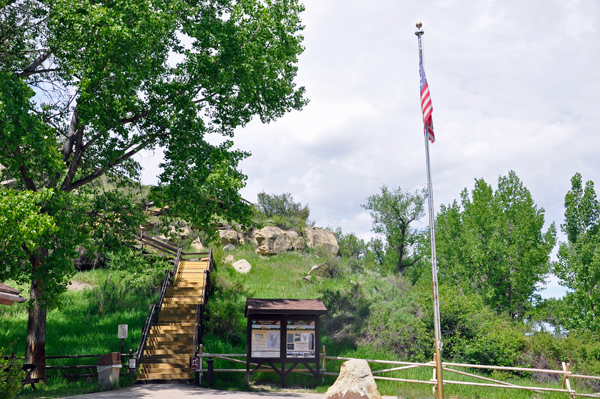
|
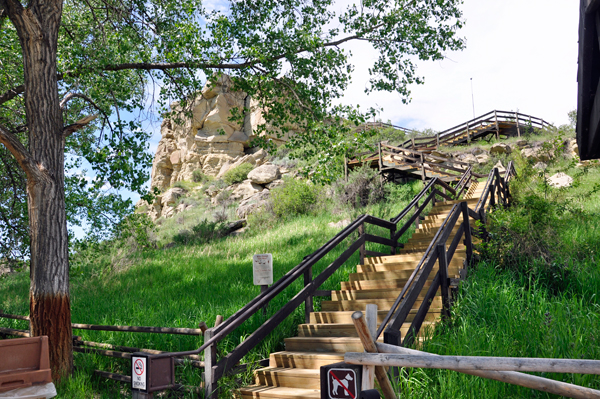
|
On July 25, 1806, Clark's group, the nine floaters, noticed a huge sandstone rock 200 feet high and 400 paces in circumference not far from the river. Clark climbed it and saw "Immense herds of Buffaloes, Elk, and Wolves." Indian pictographs were on the rock and then Clark added his name and the date. He named the rock Pompy's Tower (now called Pompeys Pillar) after Sacagawea's baby, whom she carried on a craddleboard strapped to her back for the 14 months that she accompanied and aided the expedition. There are some stairs leading up to the platform to view the signature and pictographs. |

|
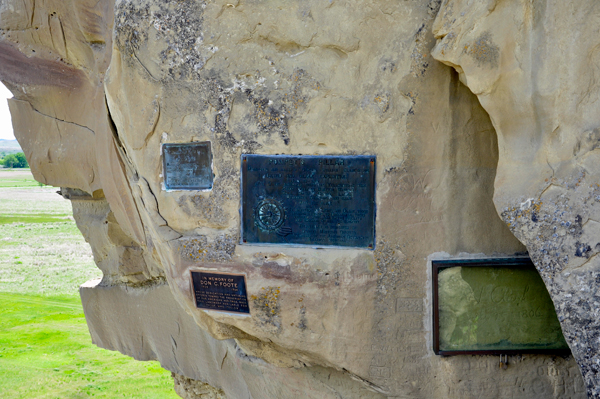
|
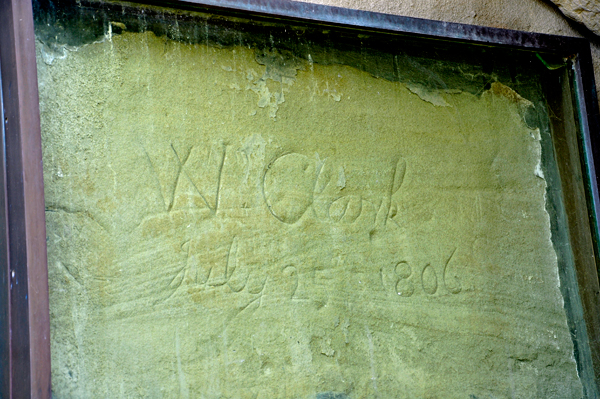
|
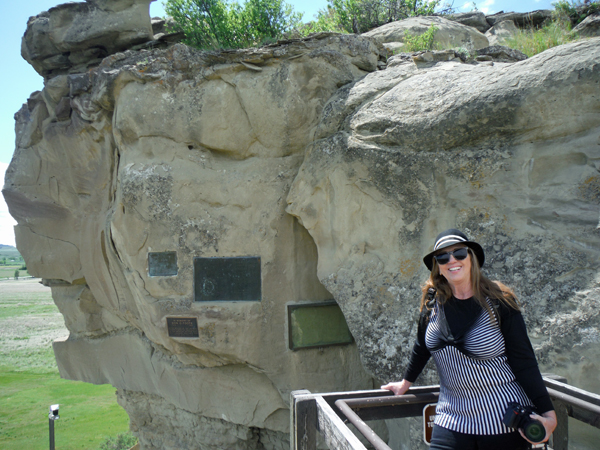 |
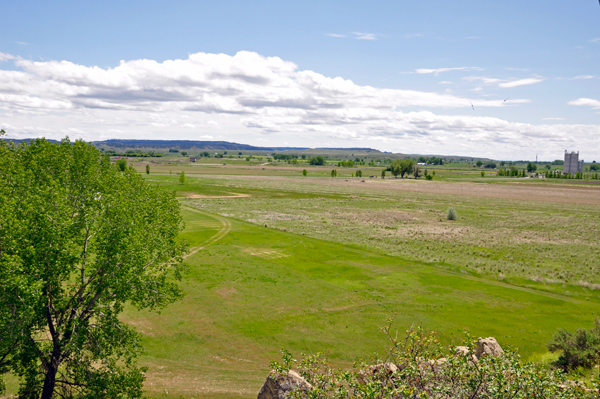 |
Below: Hundreds of markings,
petroglyphs, and inscriptions left by visitors have transformed this
geologic phenomenon into a living journal of the American West. |
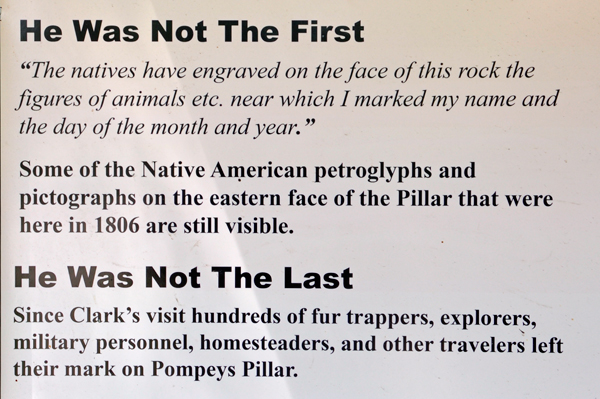
|
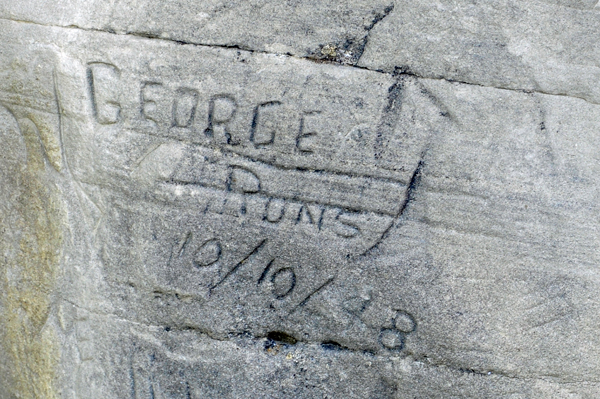
|
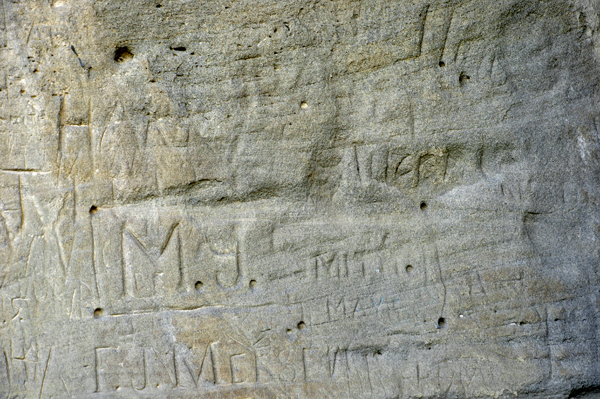
|
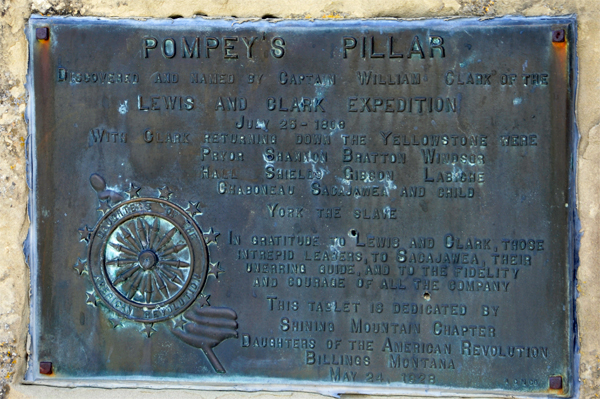
|
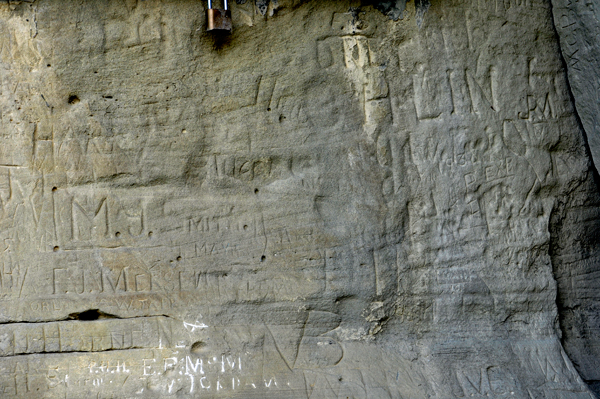
|
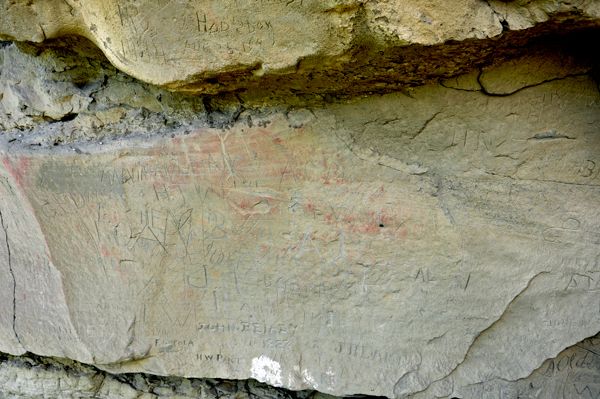
|
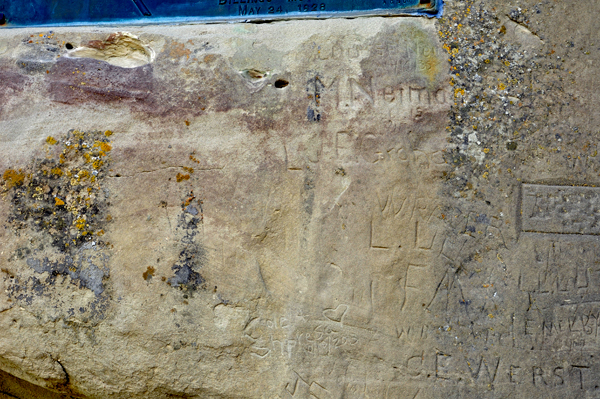
|
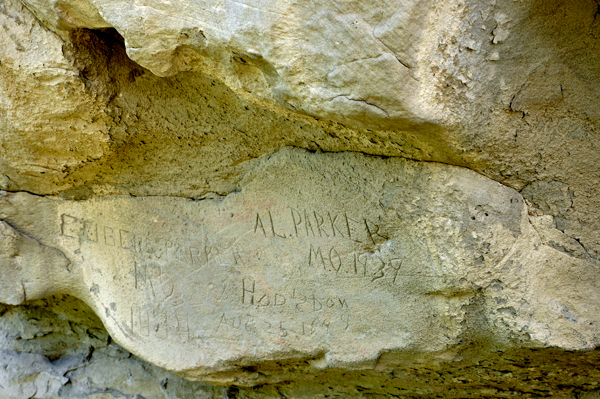
|
Below: Back down from the
signage area, the two RV Gypsies turned left and walked on a nice long,
relaxing stretch of a boardwalk before coming to more stairs. |
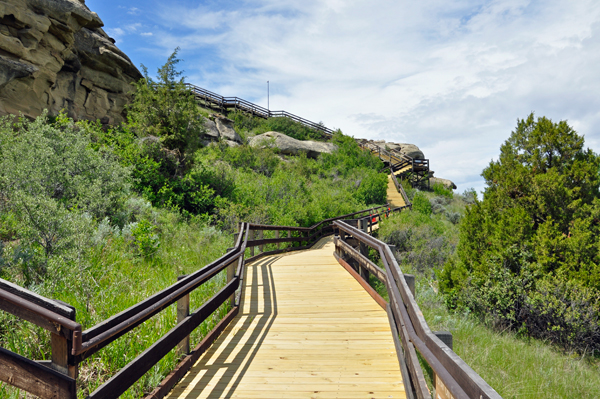
|
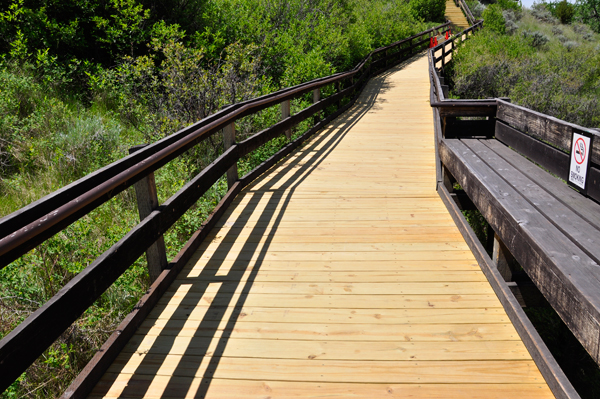
|
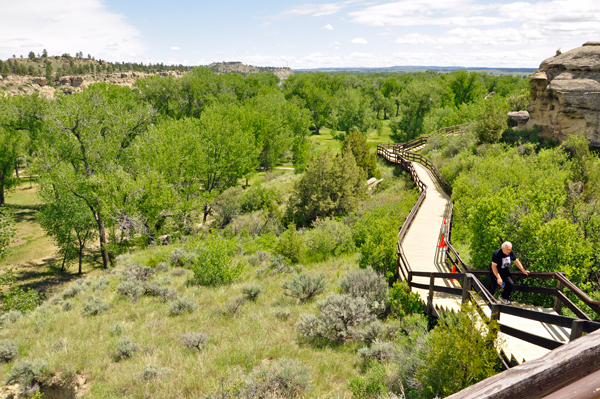 |
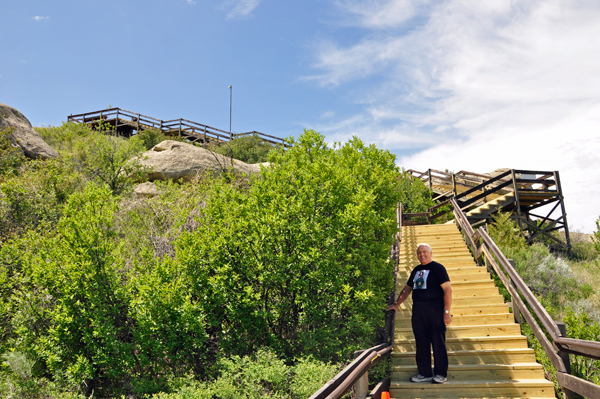 |
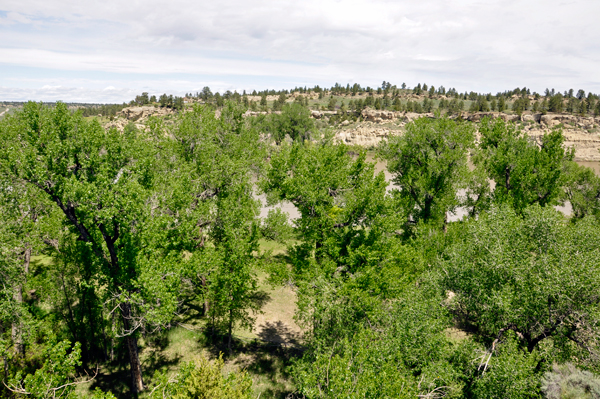
|
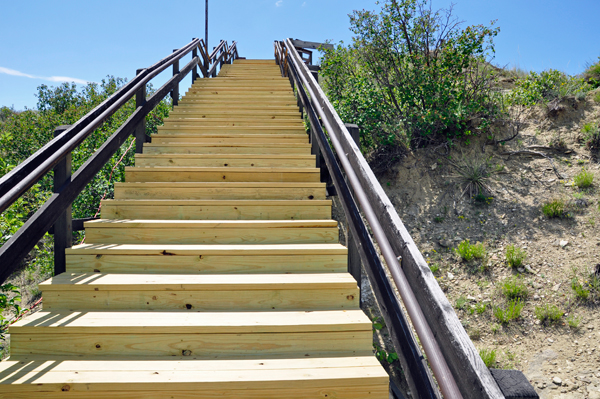
|
Below: The fields bordering
the monument to the south and east are managed to protect and enhance
pheasant and other wildlife populations. Known as the Montana Habitat
Partnership, this collaboration includes the BLM: Montana Fish, Wildlife
and Parks and Pheasants Forever. |
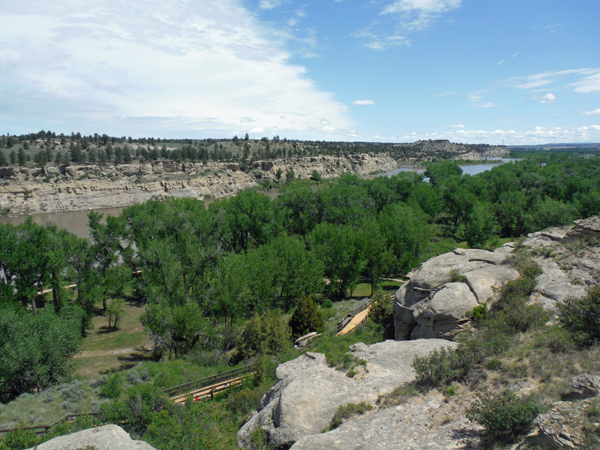
|
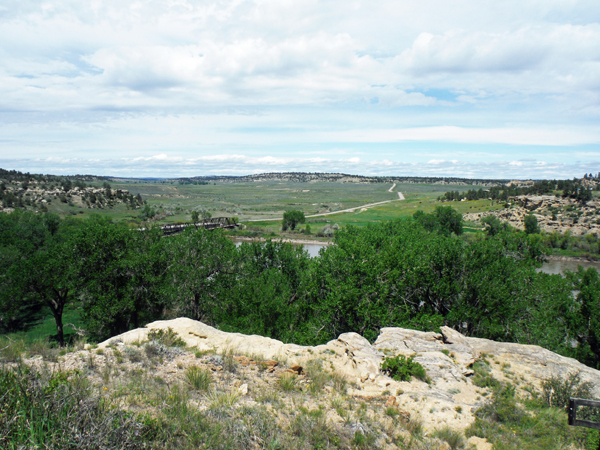
|
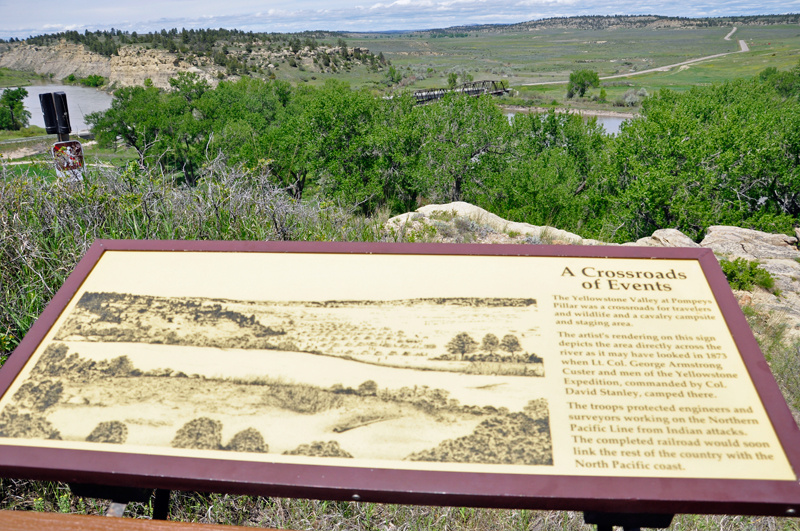
|
 |
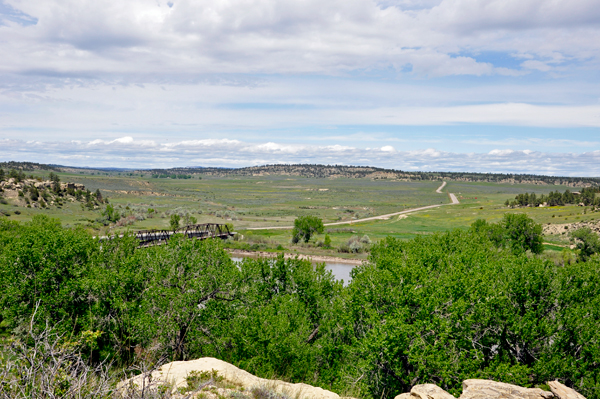
|
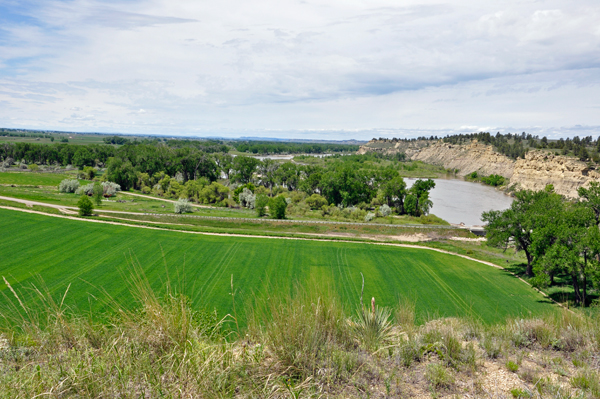
|
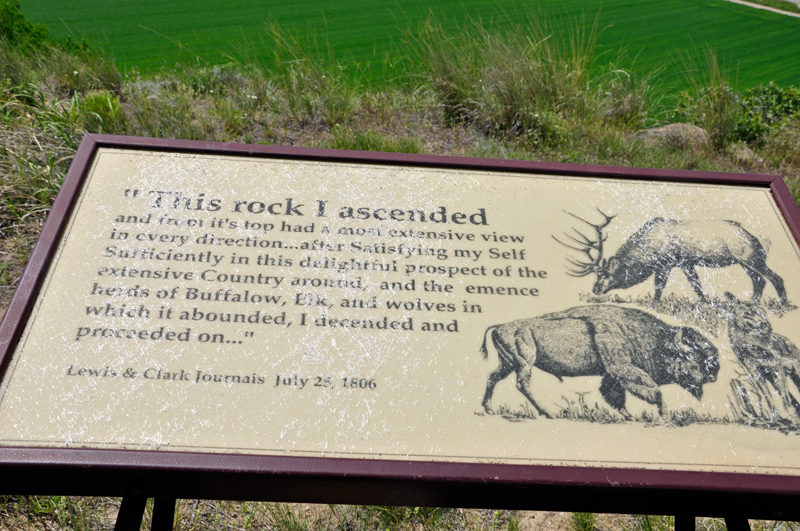 |
Below: A view of farm land
and the 670 mile long Yellowstone River. |
 |
 |
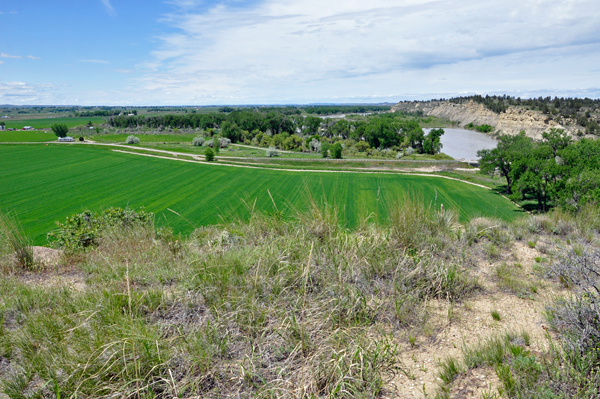
|

|
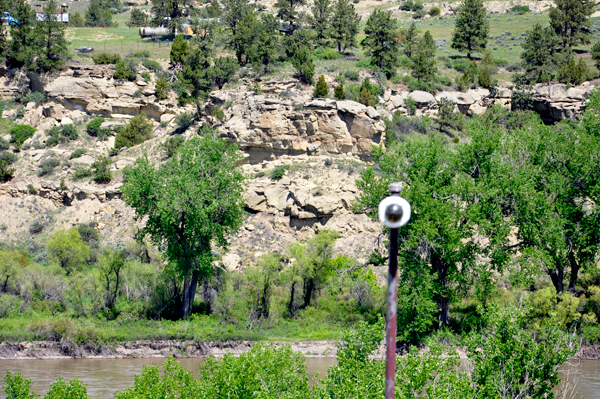 |



























































